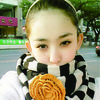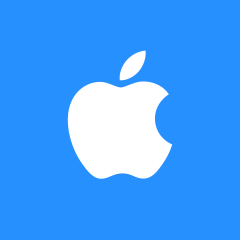在UIView中的两个角
不久前,我发布了一个关于仅将视图的两个角取整的问题,并获得了不错的答复,但是在实现它时遇到了问题。这是我的drawRect:方法:
- (void)drawRect:(CGRect)rect {
//[super drawRect:rect]; <------Should I uncomment this?
int radius = 5;
CGContextRef context = UIGraphicsGetCurrentContext();
CGContextBeginPath(context);
CGContextAddArc(context, rect.origin.x + radius, rect.origin.y + rect.size.height - radius, radius, M_PI, M_PI / 2, 1);
CGContextAddArc(context, rect.origin.x + rect.size.width - radius, rect.origin.y + rect.size.height - radius, radius, M_PI / 2, 0.0f, 1);
CGContextClosePath(context);
CGContextClip(context);
}
该方法正在被调用,但似乎并不影响视图的结果。有什么想法吗?
 富国沪深
富国沪深浏览 666回答 3
3回答
-

当年话下
iOS 11中引入的CACornerMask可帮助在视图层中定义左上,右上,左下,右下。以下是使用示例。在这里,我尝试仅舍入两个上角:myView.clipsToBounds = truemyView.layer.cornerRadius = 10myView.layer.maskedCorners = [.layerMinXMinYCorner,.layerMaxXMinYCorner]提前致谢。仅供参考: -

POPMUISE
据我所知,如果还需要遮罩子视图,则可以使用CALayer遮罩。有两种方法可以做到这一点。第一个比较优雅,第二个是一种解决方法:-),但它也很快。两者都是基于CALayer遮罩的。去年,我在几个项目中都使用了这两种方法,然后希望您能找到有用的东西。解决方案1首先,我创建了此函数以动态生成UIImage带有所需圆角的图像蒙版()。此函数本质上需要5个参数:图像的边界和4个角半径(左上,右上,左下和右下)。static inline UIImage* MTDContextCreateRoundedMask( CGRect rect, CGFloat radius_tl, CGFloat radius_tr, CGFloat radius_bl, CGFloat radius_br ) { CGContextRef context; CGColorSpaceRef colorSpace; colorSpace = CGColorSpaceCreateDeviceRGB(); // create a bitmap graphics context the size of the image context = CGBitmapContextCreate( NULL, rect.size.width, rect.size.height, 8, 0, colorSpace, kCGImageAlphaPremultipliedLast ); // free the rgb colorspace CGColorSpaceRelease(colorSpace); if ( context == NULL ) { return NULL; } // cerate mask CGFloat minx = CGRectGetMinX( rect ), midx = CGRectGetMidX( rect ), maxx = CGRectGetMaxX( rect ); CGFloat miny = CGRectGetMinY( rect ), midy = CGRectGetMidY( rect ), maxy = CGRectGetMaxY( rect ); CGContextBeginPath( context ); CGContextSetGrayFillColor( context, 1.0, 0.0 ); CGContextAddRect( context, rect ); CGContextClosePath( context ); CGContextDrawPath( context, kCGPathFill ); CGContextSetGrayFillColor( context, 1.0, 1.0 ); CGContextBeginPath( context ); CGContextMoveToPoint( context, minx, midy ); CGContextAddArcToPoint( context, minx, miny, midx, miny, radius_bl ); CGContextAddArcToPoint( context, maxx, miny, maxx, midy, radius_br ); CGContextAddArcToPoint( context, maxx, maxy, midx, maxy, radius_tr ); CGContextAddArcToPoint( context, minx, maxy, minx, midy, radius_tl ); CGContextClosePath( context ); CGContextDrawPath( context, kCGPathFill ); // Create CGImageRef of the main view bitmap content, and then // release that bitmap context CGImageRef bitmapContext = CGBitmapContextCreateImage( context ); CGContextRelease( context ); // convert the finished resized image to a UIImage UIImage *theImage = [UIImage imageWithCGImage:bitmapContext]; // image is retained by the property setting above, so we can // release the original CGImageRelease(bitmapContext); // return the image return theImage;} 现在,您只需要几行代码。我把东西在我的viewController viewDidLoad的方法,因为它的速度更快,但你可以在自定义也用它UIView与layoutSubviews实例方法。- (void)viewDidLoad { // Create the mask image you need calling the previous function UIImage *mask = MTDContextCreateRoundedMask( self.view.bounds, 50.0, 50.0, 0.0, 0.0 ); // Create a new layer that will work as a mask CALayer *layerMask = [CALayer layer]; layerMask.frame = self.view.bounds; // Put the mask image as content of the layer layerMask.contents = (id)mask.CGImage; // set the mask layer as mask of the view layer self.view.layer.mask = layerMask; // Add a backaground color just to check if it works self.view.backgroundColor = [UIColor redColor]; // Add a test view to verify the correct mask clipping UIView *testView = [[UIView alloc] initWithFrame:CGRectMake( 0.0, 0.0, 50.0, 50.0 )]; testView.backgroundColor = [UIColor blueColor]; [self.view addSubview:testView]; [testView release]; [super viewDidLoad];}解决方案2这个解决方案有点“肮脏”。本质上,您可以使用所需的圆角(所有角)创建遮罩层。然后,应通过角半径的值增加蒙版层的高度。这样,底部的圆角被隐藏了,您只能看到上面的圆角。我把代码只是在viewDidLoad方法,因为它的速度更快,但你可以在自定义也用它UIView与layoutSubviews实例方法。 - (void)viewDidLoad { // set the radius CGFloat radius = 50.0; // set the mask frame, and increase the height by the // corner radius to hide bottom corners CGRect maskFrame = self.view.bounds; maskFrame.size.height += radius; // create the mask layer CALayer *maskLayer = [CALayer layer]; maskLayer.cornerRadius = radius; maskLayer.backgroundColor = [UIColor blackColor].CGColor; maskLayer.frame = maskFrame; // set the mask self.view.layer.mask = maskLayer; // Add a backaground color just to check if it works self.view.backgroundColor = [UIColor redColor]; // Add a test view to verify the correct mask clipping UIView *testView = [[UIView alloc] initWithFrame:CGRectMake( 0.0, 0.0, 50.0, 50.0 )]; testView.backgroundColor = [UIColor blueColor]; [self.view addSubview:testView]; [testView release]; [super viewDidLoad];}希望这可以帮助。再见!
 随时随地看视频慕课网APP
随时随地看视频慕课网APP
相关分类


 iOS
iOS